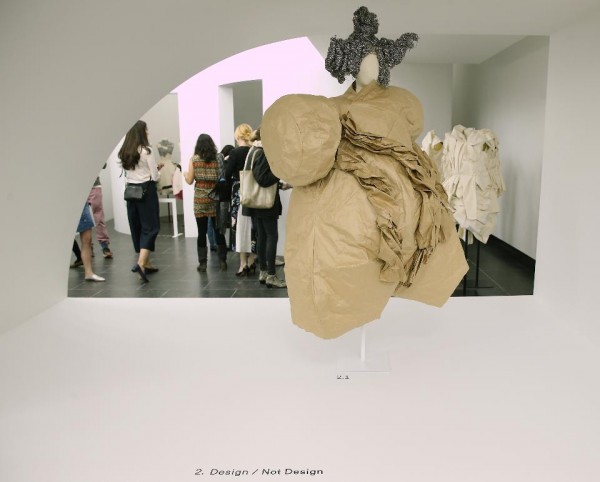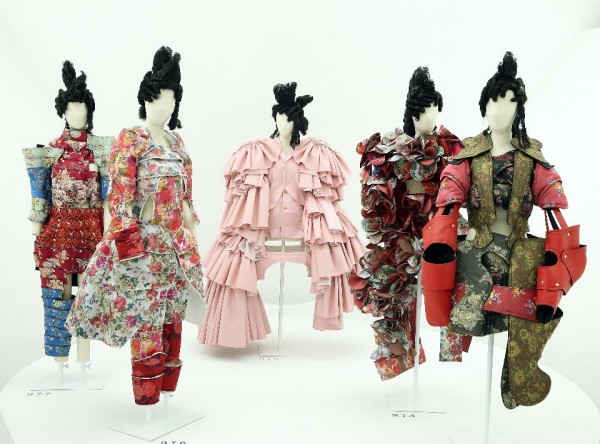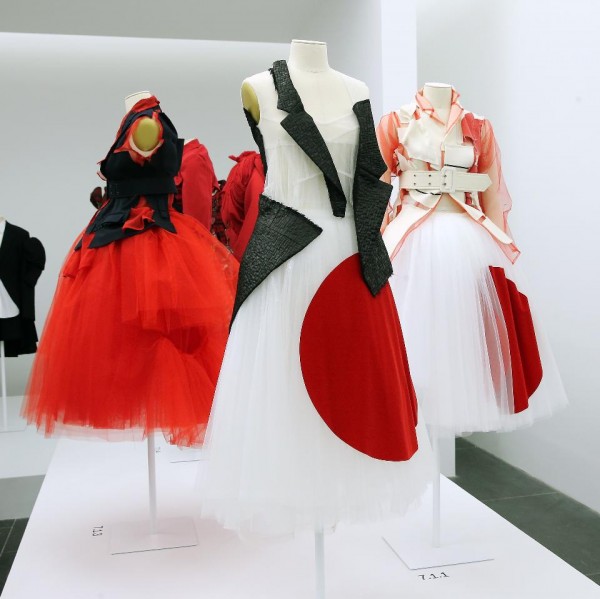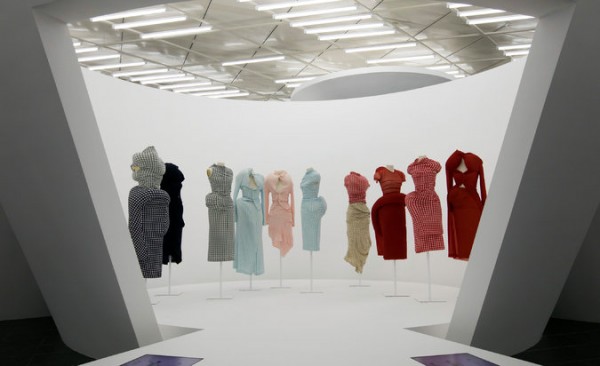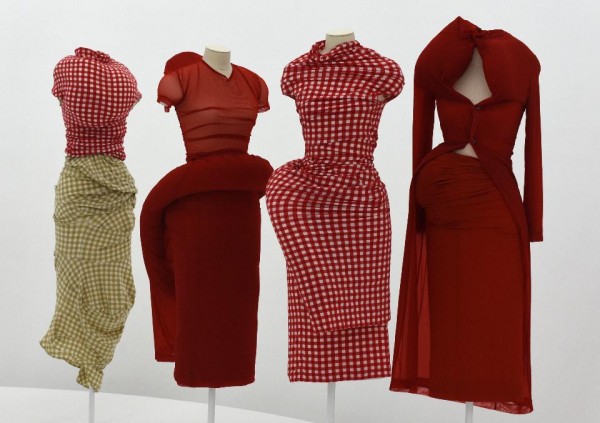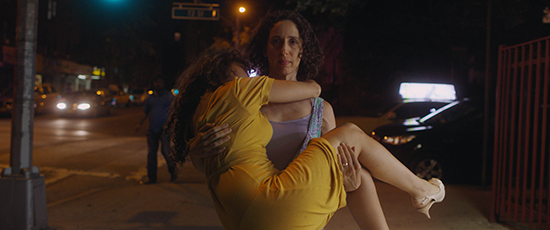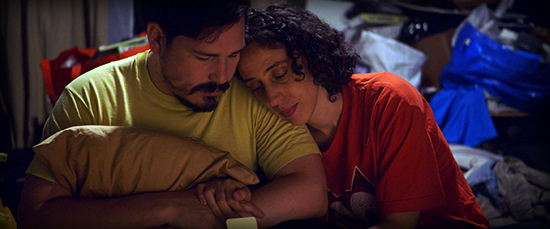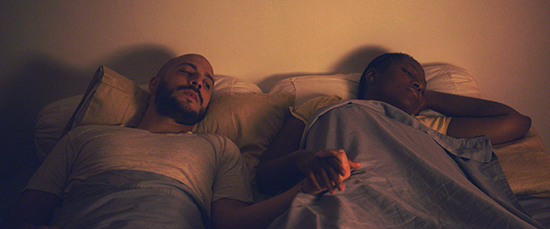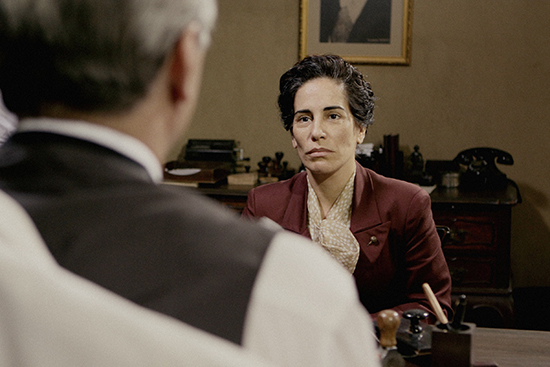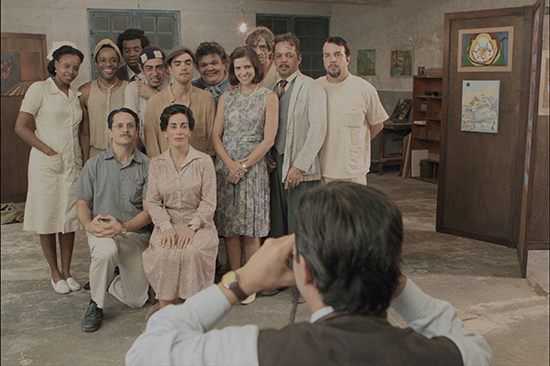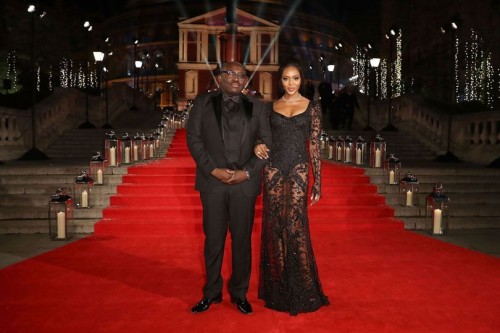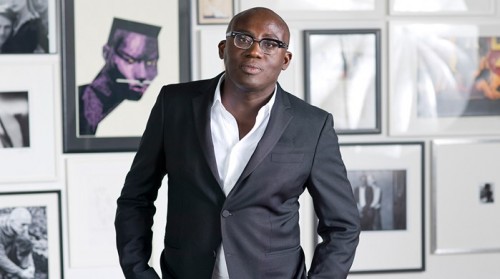- 7 years ago
-
Like athleisure, bodysuits have become an important fashion staple for the past few years. So much so they’ve even seeped its way into haute couture shows and even this year’s Met Gala with Bella Hadid rocking a sheer and glittery Alexander Wang number.
https://www.instagram.com/p/BTpgA6khVlb/?taken-by=bellahadid&hl=en
And just recently, Refinery 29 featured the The Negative Underwear ‘Essaouira’ bodysuit in black, which has sold out a record FIVE TIMES since its release.
Here’s a version of the same bodysuit in white (still fabulous)
https://www.instagram.com/p/BPxKppDA_L6/?taken-by=negativeunderwear&hl=en
The ‘Essaouira’ is made with a stretch eyelet fabric that the label calls its “anti-lace,” Refinery reports. And the model has been worn by a multitude of famous names including Miley Cyrus, Hannah Bronfman, and Emily Ratajkowski.
https://www.instagram.com/p/BNR_h2pDjQu/?taken-by=negativeunderwear&hl=en
Although bodysuits are de rigueur because they are super sexy and effortlessly hug close the body, the ones made without snappers certainly come with many drawbacks, and toilet challenges, and the pantless ones can ride up, leaving you with an unflattering wedgie.
As demonstrated perfectly by Mariah Carey:
https://www.instagram.com/p/BS1Cz1KFtv0/
However, despite the drawbacks, bodysuits are still fun to wear, and there are so many options to choose from, including from brands like Wolford, ASOS and Need Supply Co.
But if you need more inspiration: Take Rihanna’s Space-Age-Style-Goals look at Coachella. Now that’s how to rock a bodysuit!
https://www.instagram.com/p/BS8FPXfD2he/
Latest News
- 7 years ago
-
Bucket List confession: It’s been a dream of mine for quite sometime to attend the Costume Institute’s Met Gala. Colloquially and affectionately referred to as “fashion’s biggest night out,” the Costume Institute’s Met Gala is PEAK celebration of iconic style.
And as we all know by now, this year’s Met Gala was a spectacular showcase of quasi-wearable, avant-garde fashion, honoring the Costume Institute’s latest exhibition on Rei Kawakubo and her label Comme des Garçons.
And unlike past Met Gala events this hullabaloo was loaded with an incredible mix of celebrities smoking in a bathroom and meme-inducing sculptural looks that are still keeping the internet in a frenzy.
https://twitter.com/MarcSnetiker/status/859172626362585088?ref_src=twsrc%5Etfw&ref_url=http%3A%2F%2Fwww.allure.com%2Fstory%2Fbest-met-gala-memes-2017
But if you still haven’t visited the 2017 Costume Institute exhibition on Rei Kawakubo and her label Comme des Garçons you are missing out on a treat.
Here are three things you need to know about this incredible showcase.
Rei Kawakubo/Comme des Garçons: Art Of The In-Between at The Metropolitan Museum of Art.
Photo by Jemal
#1 This showcase makes history
Aptly named Rei Kawakubo/Comme des Garçons: Art of the In-Between, the exhibition highlights the reclusive designer’s wide array of left-of-center, hyper-modern, sculptural constructions — retracing almost 40 years of clothing. And this is first exhibition since 1983 Yves Saint Laurent show that celebrates a living artist.
#2 The show is weird and wonderful
Fashion Unfiltered founder and CDG collector Katherine Zarrella tells Forbes: “I thought the setup was brilliant—very CDG in the way it made no suggestions. Instead, it invites the viewer to come inside and experience the garments for herself.”
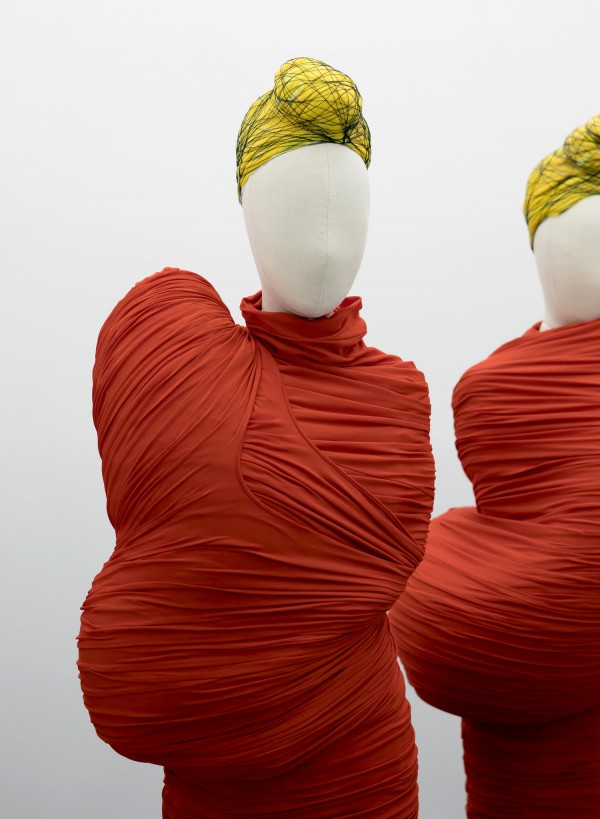 Agaton Strom for The New York Times
Agaton Strom for The New York TimesRei Kawakubo/Comme des Garçons: Art Of The In-Between at The Metropolitan Museum of Art.
Photo by Jemal
Rei Kawakubo/Comme des Garçons: Art Of The In-Between at The Metropolitan Museum of Art.
Photo by Jemal
Selections from CDG’s Body Meets Dress 1997 collection pays homage to the ‘lumps and bumps’ of a human body — even the ones that might sprout from the wrong places. Featuring dresses, skirts and jackets, made with vibrant, stretch gingham checks, stuffed with large goose-down-filled protuberances. It’s oddly beautiful.
Agaton Strom for The New York Times
- 7 years ago
-
Tomorrow Ever After is Israeli-American filmmaker Ela Thier’s second full-length feature (the first, 2012’s Foreign Letters, was inspired by her own immigration story). This smart, entertaining indie, about a historian from the year 2592 who is accidentally transported back to present-day New York City, mixes comedy and science fiction to tell a story that resonates deeply in these unsettled times. Unlike many time-travel movies, in which the future is a post-apocalyptic dystopia, Tomorrow Ever After features a protagonist, Shaina (played wryly by Thier herself), who comes from a much better era than the period known as The Great Despair (that’s us, folks!). She’s initially shocked by everything here, from litter to our isolation from each other. Through her eyes, we see ourselves and it’s not a pretty picture.
We first see Shaina wandering the streets, wearing a long dress and pants ensemble that’s vaguely high-tech, but not enough to stand out in modern-day New York. She gapes at everything from heavy bike chains to cigarette butts and discarded fast-food cups. Spotting fellow humans at an outdoor café, she runs over and hugs one guy, happily introducing herself and asking what year it is. Of course he’s freaked out and she is repeatedly rebuffed when she hugs other strangers, asking for their help. Shaina tries to contact home on her “Implement,” a cool device that morphs from a small card into a tablet, and reports her shocking findings (“I’m looking at plastic and I’m not in a museum,” “Hugs are perceived as acts of aggression”). Accosted by a nervous mugger (Nabil Vinas), she agrees to accompany him to an ATM (whatever that is) and lets him use her card, which somehow works. “It’s for money!” she realizes with delight, having studied this outmoded concept of currency.
Milton the mugger, thinking that Shaina is a veritable jackpot (as well as a crackpot), reluctantly allows her to tag along home, but things get complicated with his suspicious girlfriend Imani (Ebbe Bassey), so he unloads her on a schizophrenic friend. The latter is the only one who both enjoys her hugs and believes her tale of a physics lab accident and resulting 600-year time trip. The rest of the film details Shaina’s misadventures as she tries to find a team of 21st-century physicists who might be able to repair her broken Implement, allowing her to return home. We also see the effect she has on Milton’s life and on others she comes in contact with.
Though the theme of stranded time-traveler struggling to get home amid a hostile and disbelieving populace is familiar, Tomorrow Ever After offers a charmingly unique take. Its sharp yet whimsical tone is clearly the work of a singular mindset, namely Thier, who both wrote and directed the film, in addition to embodying its heroine. There are a few mildly disturbing scenes (Shaina manhandled in a bar and at Bellevue Hospital), but the film is generally good-natured and open-hearted.
It’s fun watching Shaina discover and observe things she’s only ever read about: a laptop computer, drunkenness, advertising. It’s also illuminating to see her recoil from old-fangled things like packaged food, noting that it makes people sick (the average life span in 2592 is 160). Her observations, while humorous, serve to remind us yet again of how much we suffer both physically and psychically in this data- and market-driven age. The film ends on an upbeat note, as dismay over the plight of 21st-century humanity gives way to the realization that things do get better. Tomorrow Ever After seems like a wish for the future of humankind, one that we can all share no matter how unlikely it may be.
Tomorrow Ever After opens on Friday, May 5, at Cinema Village, 22 East 12th St., Manhattan.
—Marina Zogbi
- 7 years ago
-
Nise: The Heart of Madness, directed by Roberto Berliner, tells the story of Dr. Nise da Silveira (Gloria Pires), a Brazilian psychiatrist who pioneered the treatment of schizophrenic patients with kindness and art therapy, resulting in both medical and artistic breakthroughs. Though a conventional film, Nise is fascinating and poignant. Not only is da Silveira a heroine well worth rooting for, but these outsider artists and their creative processes are portrayed with great respect. (And, unlike some depictions of psychiatric patients, the actors playing Nise’s charges seem believably afflicted.)
The film opens in 1940s Rio de Janeiro. A small woman knocks repeatedly at a metal door unless it finally opens. This is a fitting introduction to da Silveira, who has come to work at the National Psychiatric Center, the only female doctor on the staff. In a meeting, lobotomy is discussed dispassionately as miracle cure, while a demonstration of a patient forced to undergo electroconvulsive treatment is looked upon equally casually by everyone but da Silveira, who can barely contain her horror. Refusing to take part in these conventional methods, she is relegated to supervising the Occupational Therapy Sector, previously run by a nurse and an orderly.
Despite the fact that several of the hospital’s inmates have violent tendencies, Nise is compassionate and patient, unlike most of the staff, who treat them with cruelty and ridicule. Under her care, the previously filthy OC wing is cleaned and a group patients—most of whom are deeply entrenched in their own worlds–are led in. Rather than abuse those who act out, she observes and lets them be, repeatedly admonishing her hot-tempered orderly to do the same.
When sympathetic, art-loving staffer Amir (Felipe Rocha) suggests an art studio, da Silveiro agrees, noticing one patient who has been drawing on the wall with his own feces. (Berliner does not spare us off-putting behavior, all the better to appreciate da Silveira’s near-saintly forbearance.) It’s a long, slow process before many of the patients take to this new outlet. For them, the creative process is clearly very intense; Berliner shows how these poor souls, unable to express themselves conventionally, wrench out their thoughts and emotions onto canvas or into sculpture, through careful brushstrokes or energetic clay molding. Meanwhile, Nise’s husband has given her a book by Karl Jung and she begins applying the latter’s ideas about mysticism and the unconscious to interpretations of her charges’ creations. She writes to Jung about her experiment, enclosing photos of the paintings. Per the celebrated psychoanalyst, Nise uncovers her artists’ pasts and we learn what they are expressing in their artwork.
When the OCT puts on a show, major art critic Mario Pedrosa shows up, amazed by the work on display. He is convinced that the rest of the world needs to see this art. The hospital’s other doctors, however, are not as impressed. (Though the patients’ behavior has improved, they haven’t formally been “cured”). With every step forward (an encouraging Jung writes back), there’s a setback, such as the hospital’s callous response to the dogs Nise has brought to the center for patients to care for. Undeterred, the tenacious Nise is unwavering in her belief in her methods and support of the patients. Gradually, released from their minds, the previously silent artists begin to speak. One of them, formerly considered incurable, improves enough to go home.
Championed by Pedrosa, the art is exhibited publicly in a show called Don’t Fear the Unconscious. Some of the artists under Nise’s care (including Carlos Pertuis and Emygdio de Barros) would go on to become highly regarded artists in Brazil.
Nise: The Heart of Madness ends with footage of the actual patient-artists portrayed, and a video snippet of an interview with an elderly and spritely da Silveira. Though it is somewhat predictable in its good vs bad doctor dynamic and dialogue that is a tad obvious (“My instrument is a brush; yours is an icepick!”), this compassionate movie’s strengths outweigh any deficiencies.
Nise: The Heart of Madness opens on Friday, April 28, at Village East Cinema, 181-189 Second Ave., Manhattan.
—Marina Zogbi
- 7 years ago
-
Even more awesome than the Wackids playing Rage Against the Machine using children’s toys, is the announcement that world-renowned sartorialist Edward Enninful will be the new editor-in-chief of British Vogue — one of the most storied woman’s magazines in the world.
From his work with i-D, Italian Vogue, and W Magazine this shouldn’t come as a surprise, however this is actually big news! Simply because, as Lauren Cochran aptly sums it up, Enninful is “a black man at the helm of the most established fashion magazine in Britain” — working in an industry that is predominately white and that seems to largely service more privileged sections of society.
In fact British Vogue has been taken to task for “its lack of diversity in model casting.” As Cochran points out, Jourdan Dunn was the first black model to grace the cover of British Vogue as its solo star in 12 YEARS! (Naomi Campbell was the last model to appear on her own cover in 2002 ).
Naomi Campbell and Edward Enninful at 2016 Fashion Awards
Photo Courtesy: REX
And Enninful has been highly vocal, dressing down the fashion world for its blatant lack of diversity.
In a talk last year, Enninful says to an audience: “If you put one model in a show or in an ad campaign, that doesn’t solve the problem.” He continues: “We need teachers in universities, we need internships, we need people of different ethnic backgrounds in all parts of the industry. That really is the solution; you have to change it from the inside.”
Perhaps his new appointment is part of Vogue‘s effort to ‘change?’ We shall soon find out. Currently serving as fashion and style director at W Magazine, Enninful will assume his new role on August 1.
Photo Courtesy: Giorgio Niro
In the meantime, since it was announced on April 10, Enninful has said that his appointment is “truly a dream come true.” And he has also said that he was most looking forward to sharing the HUGE and splendid news with his father, who immigrated to England from Ghana with his mother and six children.
Photo Courtesy: REX
“I grew up reading British Vogue – I am so honoured and humbled to be taking up the mantle of editor,” he tells Vogue. “I realise I am stepping into the shoes of a hugely respected editor in the shape of Alexandra Shulman, someone who has chosen to leave at the top of their game with a legacy of 25 years of success.”
He goes on to say: “British Vogue is a great magazine with a legacy of creativity and innovation,” adding “I look forward to continuing to produce an exciting beautiful magazine for its readers.”
https://www.instagram.com/p/BS3pPVcjZkj/?hl=en
Anna Wintour, artistic director of Condé Nast and editor of American Vogue, where Enninful is a former contributor, said: “It is a brilliant choice, and I am thrilled for him. Edward will undoubtedly shake things up in a way that will be so exciting to watch.”
Congrats, Edward! We can’t wait to pick up an upcoming copy!

